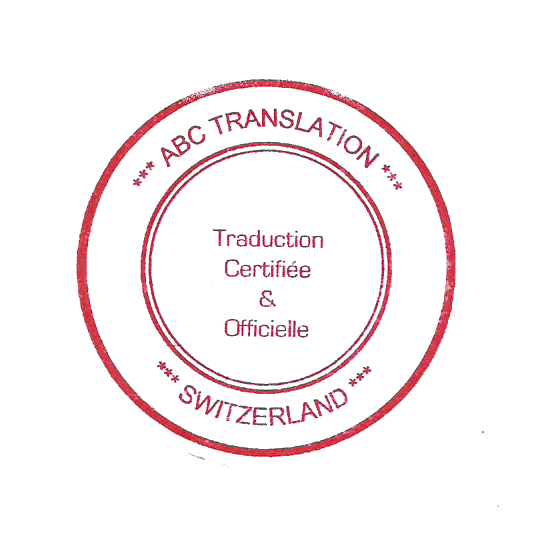AI’s Impact on Translators & Interpreters: Disruption or Evolution?
Last week, we explored how translation technology evolved from handwritten texts to the era of AI-powered tools. But beyond the history, the real question is: how is AI affecting the professionals behind the translations (AI’s Impact on Translators & Interpreters)?
There’s a lot of fear, excitement, and speculation about what AI means for human translators and interpreters. Will automation replace traditional roles, or is this simply the next stage of industry evolution?
In this article, we break down AI’s role in three key areas:
- How AI is changing the daily work of translators and interpreters
- The strengths and weaknesses of AI vs. human linguists
- The long-term implications for professionals in the field
By analyzing both opportunities and challenges, we’ll uncover what AI really means for the future of human expertise.
AI in Translation: Efficiency vs. Accuracy
Translation has always been a time-intensive process, requiring linguistic expertise, cultural understanding, and industry knowledge. With the rise of AI-powered tools like DeepL, ChatGPT, and Google Translate, companies now have access to instant, automated translations at a fraction of the cost.
But is AI actually delivering the quality businesses and clients need?
The Positives: AI as a Productivity Booster
- Speed and Scalability – AI can translate thousands of words in seconds, making it ideal for large-scale content.
- Cost Savings – Businesses can reduce translation expenses, making language services more accessible.
- Basic and Repetitive Translations – AI is highly effective for structured documents like manuals and legal contracts.
- Data-Driven Improvements – AI learns from vast datasets, continuously improving in common language pairs.
Example: A global e-commerce company implemented AI translation for its product descriptions and customer reviews, improving efficiency. However, human translators were still needed for marketing campaigns and legal disclaimers, where precision was crucial.
The Challenges: AI’s Limitations and Risks
- Context and Cultural Sensitivity – AI struggles with humour, idioms, and cultural nuances, often leading to misinterpretations.
- Specialised Knowledge Gaps – Medical, legal, and highly technical fields require human expertise to ensure accuracy.
- Quality Inconsistencies – AI performs well in major languages, but translations into less common dialects can be unreliable.
- Security Risks – Cloud-based AI tools may store sensitive data, raising confidentiality concerns.
Key Takeaway: AI enhances human translation rather than replacing it. The best results come from AI combined with human post-editing, ensuring accuracy while benefiting from AI’s speed.
AI in Interpreting: Can Machines Replace Human Interaction?
Unlike written translation, interpreting requires real-time decision-making, emotional intelligence, and adaptability—qualities that AI struggles to replicate.
With speech-to-text AI, real-time machine translation, and virtual interpretation platforms, businesses and governments are exploring automated solutions. But how well do they actually work?
The Positives: Expanding Access and Breaking Language Barriers
- Live Captions and Subtitling – AI-generated subtitles are improving accessibility for global audiences.
- Instant Multilingual Communication – Tools like Google Live Translate enable real-time conversations across languages.
- Cost-Effective for Basic Scenarios – AI-driven interpretation is useful for low-risk settings, like casual business meetings.
Example: A multinational company used AI-powered interpretation during virtual team meetings. It worked well for basic discussions, but when employees used industry jargon or humor, the AI failed to provide accurate interpretations.
The Challenges: The Human Element Still Matters
- Tone, Emotion, and Intent – AI struggles to interpret sarcasm, urgency, and cultural context, often misrepresenting speaker intent.
- Group Conversations and Cross-Talk – AI finds it difficult to process multiple speakers at once, leading to errors in real-time interpretation.
- Legal and Medical Risks – In critical settings like courtrooms and hospitals, a single AI misinterpretation could have serious consequences.
Key Takeaway: AI interpreting works for informal, low-stakes conversations, but human interpreters remain essential for accuracy, clarity, and cultural adaptation.
AI vs. Human Expertise: A Balanced Future
Rather than a battle between humans and AI, the translation industry is shifting toward a hybrid model, where professionals and technology work together.
| Factor | AI Translation and Interpreting | Human Translators and Interpreters |
| Speed | Instant | Slower but precise |
| Cost | Lower | Professional fees apply |
| Accuracy | Can be unreliable | High accuracy |
| Cultural Sensitivity | Limited understanding | Deep contextual awareness |
| Adaptability and Creativity | Limited | Essential for nuance and emotion |
| Industry-Specific Knowledge | Limited, needs human oversight | Subject-matter expertise |
| Security and Confidentiality | AI tools store data | Secure and private |
Example: A government agency tested AI for legal contract translations. While AI handled standard clauses well, it misinterpreted case-specific terminology, requiring extensive human revision before submission.
Key Takeaway: AI assists, but humans refine. Translators and interpreters who adapt to AI-powered workflows will be in high demand, as companies seek professionals who can combine technology with human expertise.
The Road Ahead: Opportunities and Challenges for Translators
Opportunities
- Increased Productivity – AI helps reduce repetitive work, allowing linguists to focus on complex projects.
- New Career Paths – Specializations like AI post-editing, data training, and multilingual AI refinement are emerging.
- Greater Demand for High-Quality Translations – As AI creates more content, the need for human-reviewed translations will grow (AI’s Impact on Translators & Interpreters).
Challenges
- Job Market Shifts – The demand for basic translation jobs may decline, requiring professionals to upskill.
- AI Bias and Ethical Concerns – AI can reinforce biases in translation, making human oversight crucial.
- Quality Control Risks – AI-generated translations may require extensive human post-editing, leading to hidden costs.
What’s Next?
For translators and interpreters, the future isn’t about competition with AI—it’s about collaboration. Those who embrace AI tools, develop niche expertise, and focus on quality assurance will remain irreplaceable.
What are your thoughts? Do you see AI as a threat or an opportunity in the translation industry? Share your perspective below.





